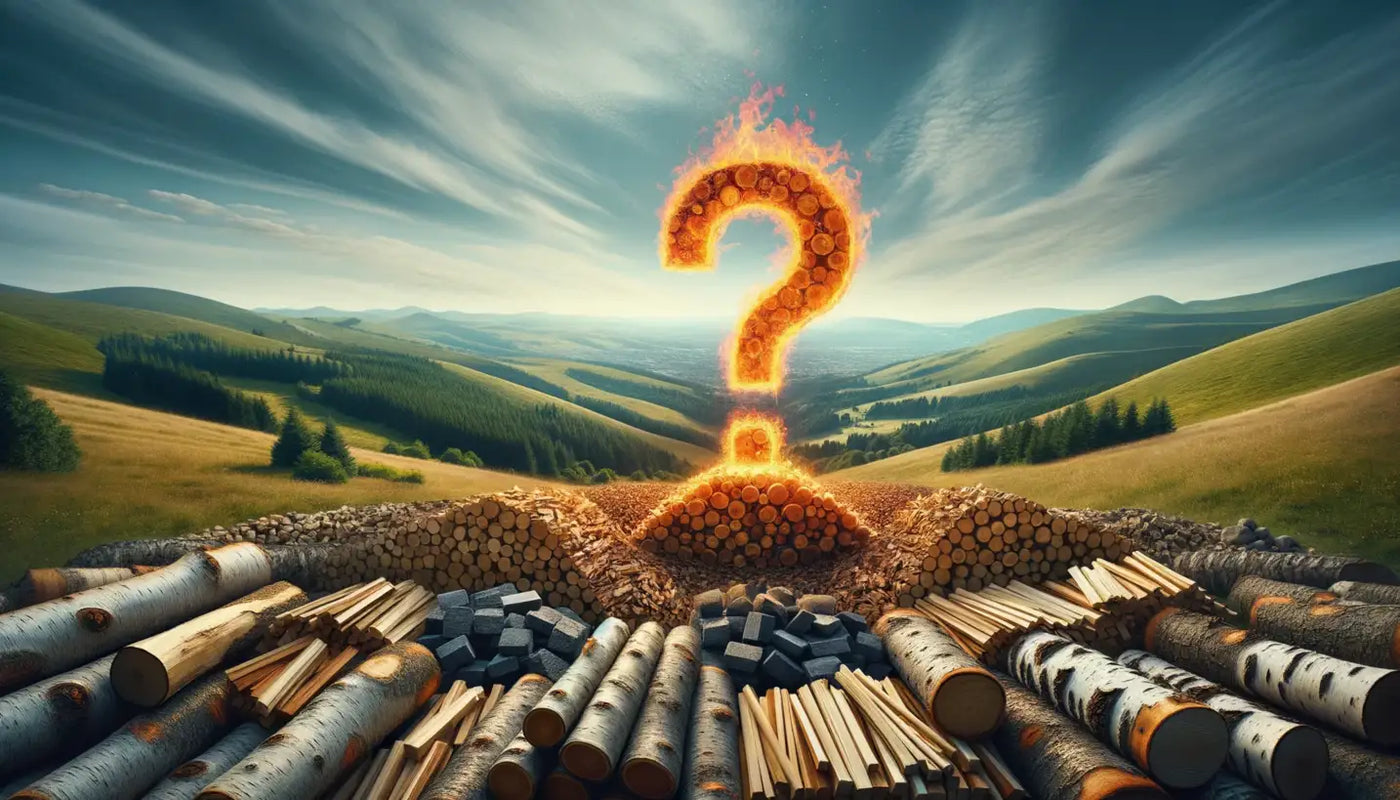Introduction
Since the dawn of time, fire has been a cornerstone of human civilization. It provided early humans with warmth, protection and a means to cook food. The fuel that powered these early fires was, of course, wood. Even today, in this age of central heating and electric stoves, wood remains a key source of fuel for many households, restaurants, and outdoor enthusiasts.
We utilise a variety of wood types for fuel, from the sturdy oak and fragrant cherry to the fast-burning pine and birch. Each type of wood has unique characteristics that influence how it burns and the kind of flame it produces. Understanding the science behind these wood types and their combustion properties is essential to get the most out of your fire, whether for heating, cooking, or simple enjoyment of a cosy hearth.
Understanding Wood Combustion
What Happens When Wood Burns
When you light a piece of wood, you are initiating a complex process of chemical reactions known as combustion. The heat from the flame causes the wood to decompose and produce volatile gases. These gases then mix with the oxygen in the air and combust, releasing energy in the form of heat and light. This process continues until all the combustible material in the wood has been consumed, leaving behind ash and non-combustible minerals.
Factors Affecting Wood Combustion
Moisture Content
Moisture plays a key role in the combustion process. The moisture content of wood can significantly affect its combustion characteristics. Freshly cut, or 'green', wood has a high moisture content, which hinders combustion. This is because a significant amount of energy is wasted in evaporating the water instead of producing heat. On the other hand, seasoned or kiln-dried wood with lower moisture content burns more efficiently, producing more heat and less smoke. Ideally, wood for burning should have a moisture content of less than 20%.
Density
The density of wood is another critical factor affecting its combustion. Hardwoods, such as oak and maple, are denser than softwoods like pine. As a result, dense hardwoods burn more slowly and generate more heat over a longer period than less dense softwoods. This is why hardwoods are often preferred for heating purposes, while softwoods are great for quick fires or kindling.
Chemical Composition
The chemical composition of wood, primarily lignin, cellulose, and hemicellulose, also affects its combustion properties. Lignin is responsible for the structure of the wood, while cellulose and hemicellulose are sugars that provide the fuel for combustion. Different woods have varying compositions of these components, which results in differences in flame characteristics.
Wood Types and Their Flame Characteristics
Oak
Oak is a popular choice for firewood due to its high density and slow-burning nature. It produces a steady, long-lasting flame and substantial heat, making it excellent for heating homes and cooking.
Pine
Pine is a less dense wood, known for its resinous nature. This gives it a quick, crackling flame that's perfect for starting a fire quickly. However, due to its lower heat output and faster burn rate, it's often used for kindling rather than as the main fuel source.
Maple
Maple, with its moderate density, burns evenly and consistently. It delivers a balanced flame that is perfect for heating and cooking. Maple's flame is less volatile than that of pine but not as steady as oak, striking a happy medium.
Birch
Birch is known for its high moisture content and lighter density. It ignites easily and burns with a bright, lively flame. Like pine, it's great for getting a fire started quickly but burns out faster than denser woods.
Cherry
Cherry wood is loved by many for its sweet-smelling nature. It has a moderate density and produces a warm, aromatic flame that's not only great for heating but also adds a delightful aroma to the surroundings. It's often used in cooking, especially for smoking meats.
Other Wood Types
Other popular woods for combustion include ash, beech, and hickory, each with their unique flame characteristics. For instance, ash is known for its fast ignition and steady burn, while hickory is famed for its high heat output.
Practical Applications
Heating and Cooking
Choosing the right wood type is crucial for heating and cooking applications. For example, if you're looking for efficient heat production, hardwoods like oak, maple, and ash are excellent choices due to their high heat output and slow burn rate. For cooking purposes, such as smoking or grilling, you might prefer woods like cherry or hickory that add a distinctive flavour to the food.
Fireplace Aesthetics
The visual appeal of a fire can greatly enhance the ambiance of a room. Different woods produce different flame characteristics, with variations in colour, intensity, and movement. For example, birch produces a bright, lively flame that can create a cheerful atmosphere, while the steady glow of oak is perfect for a relaxing evening by the fireplace.
Woodworking and Art
Understanding the combustion properties of different wood types can also be helpful in woodworking and art projects. For instance, the flame characteristics of wood can be leveraged to create unique effects in wood-burning art. Also, the selection of the right wood type can influence the durability and aesthetic of wooden furniture or structures.
Conclusion
In conclusion, understanding the science behind different wood types and their flame characteristics is not only fascinating but also practical. It can help you select the best wood for your specific needs, whether that's heating your home, cooking a delicious meal, creating a cosy ambiance, or crafting a piece of art.
We encourage you to explore and experiment with different types of wood. Perhaps you'll find a new favourite or discover a unique use for a type of wood you'd never considered before. After all, there's a whole world of wood out there, each with its unique story to tell through its flame.

